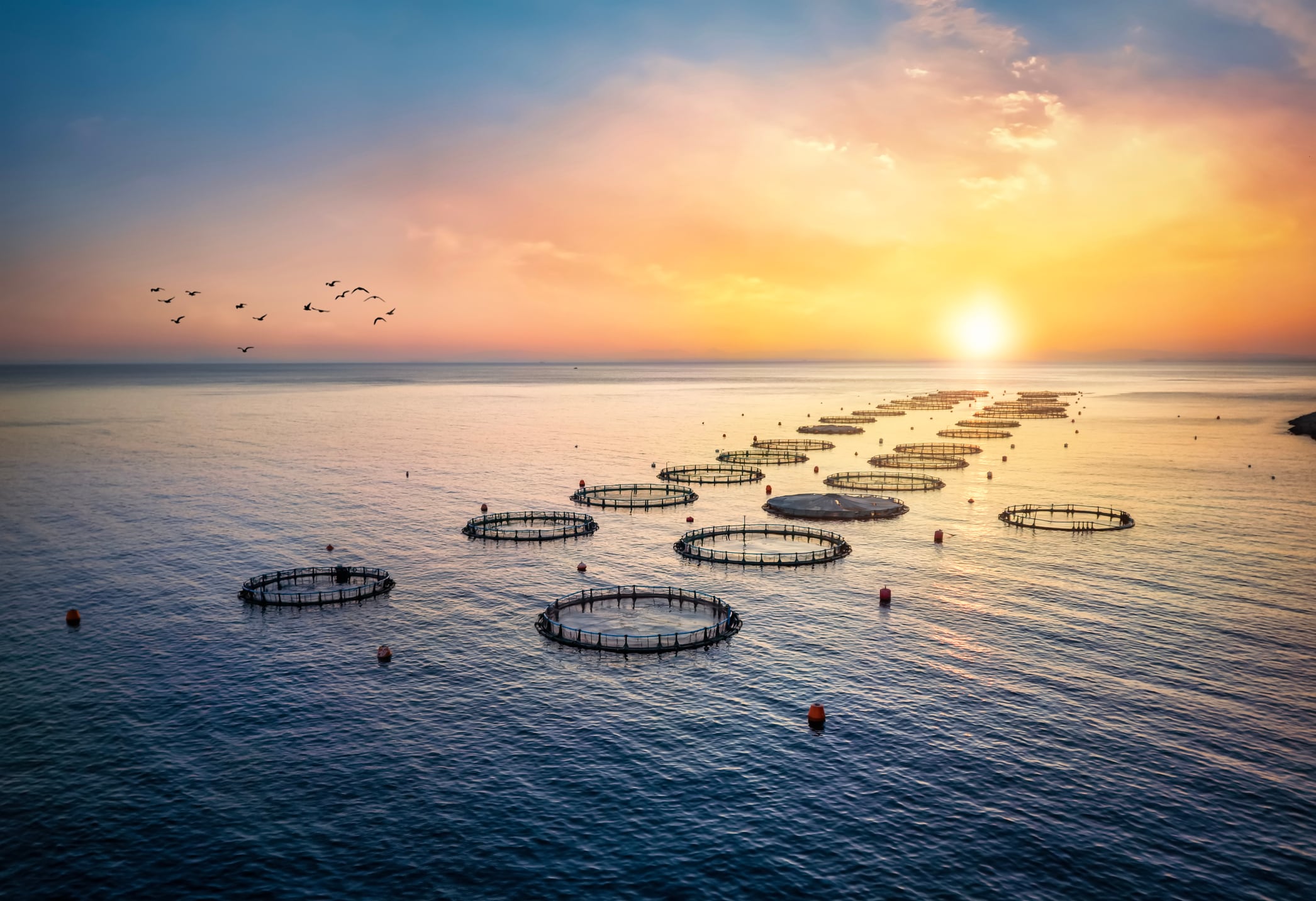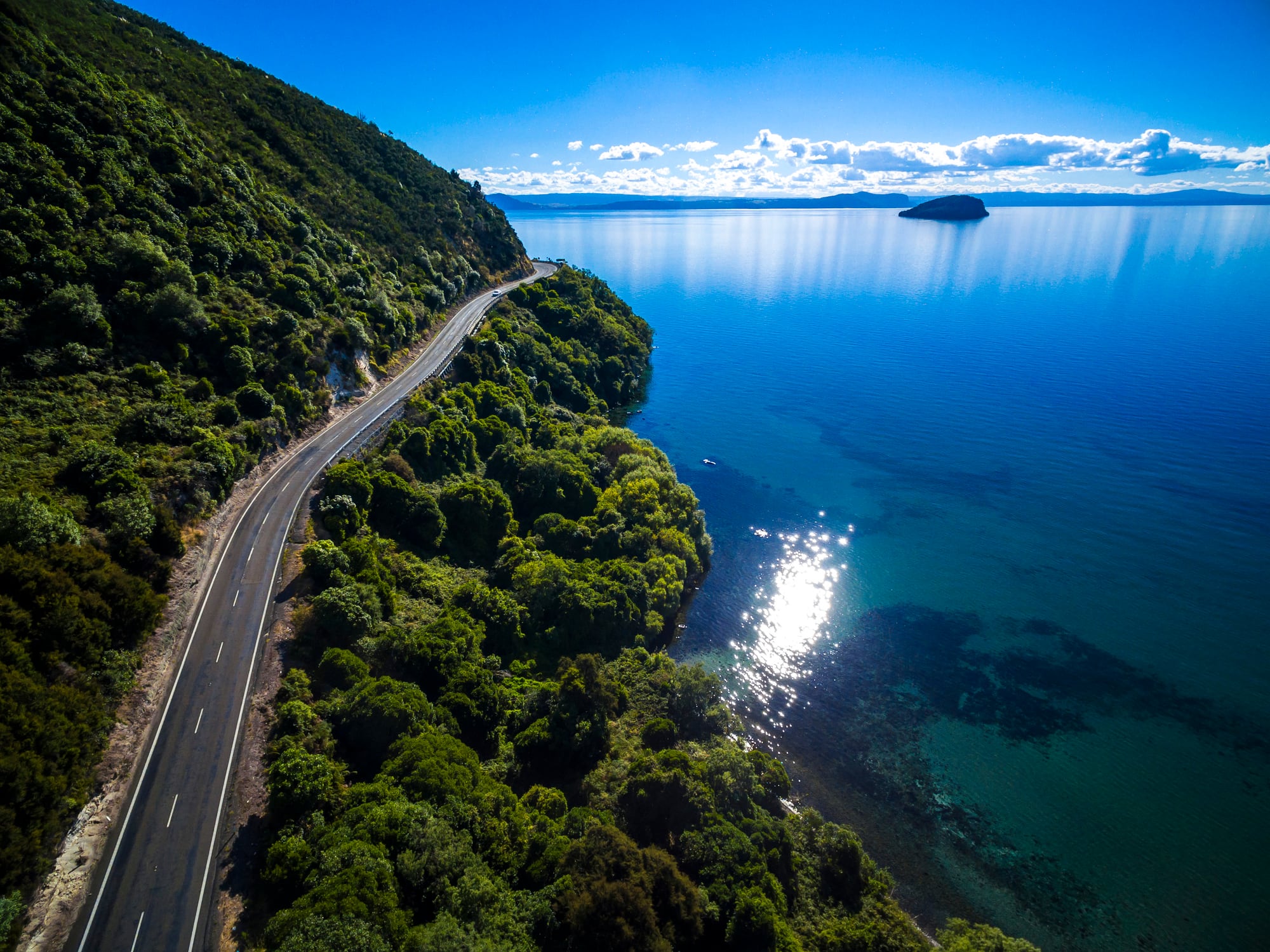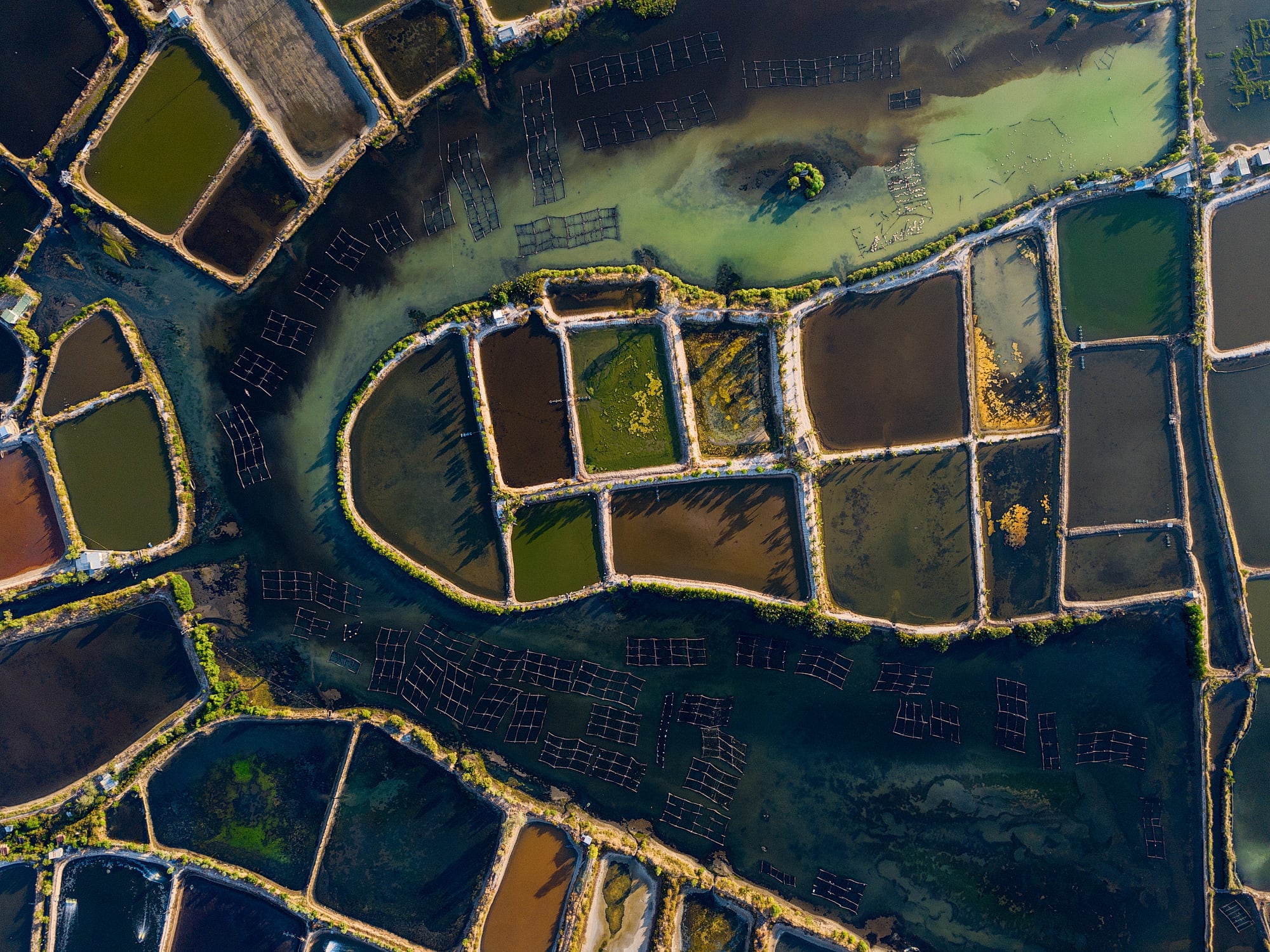A January report by Rabobank on global animal protein production forecasted that growth in 2025 would be led by aquaculture, wild-capture fisheries, and poultry.
In fact, the report said seafood would be the largest driver of this growth, surpassing and “dethroning” poultry.
Aquaculture and wild catch are both projected to experience growth of 2.3% year-on-year (YoY) after a dipping 0.3% in 2024.
But as capture fisheries face their natural limits, aquaculture has become crucial to meeting consumer and market needs for seafood.
According to The State of World Fisheries and Aquaculture report by the Food and Agriculture Organisation of the United Nations (FAO), aquaculture surpassed capture fisheries in aquatic animal production for the first time in 2022.
Total fisheries and aquaculture production reached an all-time high record of 223.2 million tonnes, with Asia dominating production at 70%.
In the Global Aquaculture Outlook 2025 report by Rabobank and the Global Seafood Alliance (GSA), pangasius and tilapia are expected to have the highest production growth in 2025, up 7% and 5% YoY respectively.
Species with the strongest presence in Europe—Atlantic salmon, sea bass, and sea bream—are expected to see supply growth of 3% to 4% in 2025.
However, challenges remain within the sector.
For instance, Rabobank forecasted global salmon supply to grow by 3% to 4% YoY, but its growth is conditional.
It noted that in 2024, salmon grew at only an estimated 1% to 2% due to biological challenges — particularly Norway — which limited production.
Norwegian farmers may very well face issues such as sea lice and low vaccination rates for winter sores.
“If high lice pressure returns to Norwegian waters in the summer, it could lead to increased mortality if it follows the same pattern as in 2024,” the report said.
It added that new vaccines and cooler seawater temperatures could mitigate the issues.
Over in Chile low biomass levels are expected, similar to 2024 when El Niño and an algae bloom forced farmers to harvest early.
However, cooler waters are expected to support better biological conditions, leading to a projected supply increase of 1% to 2%.
Consumer demand for salmon is expected to remain strong despite economic uncertainty and inflationary pressures. This is because it is considered a cost-effective option compared to other high-priced animal proteins.
On the other hand, demand for shrimp has been weak, leading to the current oversupply.
China remains a chief concern for the shrimp sector. Import volumes and values have been on a monthly decline since February 2024.
The continued softness of China‘s economy and the already weak domestic demand could lead to a “prolonged weakness” in shrimp demand in 2025.
However, with signs of recovery observed in the US and Europe, experts are cautiously optimistic about a recovery.
Challenging mortality in modern aquaculture
No matter the species, high mortality rates remain the biggest challenge facing farmers, impacting production and profitability.
Disease remains the leading cause of mortality in aquaculture which is increasingly exacerbated by intensive farming practices and environmental issues.
The reality is that a disease outbreak can wipe out millions of dollars in a matter of days. In this fight, vaccination is a key tool in managing the diseases — but it is not a complete solution.
For example, there are vaccines that can reduce the deaths caused by winter sores in salmon. However, a 2023 study found that the effectiveness of the vaccine depends on the bacterial strain used.
A major concern in aquaculture is the overuse and misuse of antibiotics which is accelerating the development of antimicrobial resistance (AMR). It does not just impact public health, but the industry’s sustainability on a whole.
In April, Singaporean start-up Peptobiotics secured US$6.2m in Series A funding to advance its antimicrobial peptide technology, which aims to replace antibiotics due to concerns about overuse and resistance in the aquaculture industry.
“Compared to the rest of agriculture, aquaculture has some of the most acute problems with disease and correspondingly sees farmers having to resort to some of the worst antibiotic abuse. For our technology, this is an ideal use case. We get a lot of urgency from the farmers, who are interested in new non-antibiotic solutions,” co-founder and CEO Jonathan Bester told AgTechNavigator.
In the same month, 11 of Chile’s leading salmon producers, announced Project Yelcho, a pre-competitive initiative aimed at significantly reducing antibiotic use in the world’s second-largest salmon industry.
This “unprecedented” collaboration will also involve pharmaceutical companies to identify and develop innovative solutions for common bacterial diseases such as Salmon Rickettsial Syndrome (SRS).
Healthy stocks from the start
Broodstock management is another critical factor in reducing mortality across aquaculture. When healthy and robust, broodfish are more likely to produce offspring with greater resilience against disease and environmental stress.
“The adoption of good genetic management practices in breeding systems is critical in order to retain, over time, the genetic variation that forms the basis of a species’ potential to adapt to change and on which to build selective breeding programmes,” the FAO report highlighted.
It said effective genetic management ensures the preservation of diversity in farmed fish, ensuring future improvement genetically.
“Potential gains from selective breeding in aquatic species are thus highly significant and, consequently, breeding programmes can greatly enhance production efficiency in coming years, making significant contributions to the sustainable intensification of aquaculture production.”
An academic review published in January explored the application of gene editing technology in aquaculture as a “powerful” solution to meet the increasing global demand.
“By modifying key genes in fish, it is expected to rapidly enhance growth rate, disease resistance, and other economically important traits, leading to increased profitability, sustainability, and competitiveness of the industry.”
The researchers from Singapore and China concluded the review saying that despite the potential, crucial challenges remained.
“Many important traits are complex and are influenced by multiple genes and environmental factors. Identifying and functionally analysing genes for key traits is crucial for targeted editing. In addition, improved methodologies are needed to increase editing efficiency, survival rates, and reduce off-target effects.”
Additionally, it noted that ethical, safety, and regulatory considerations must be taken into account.
“Balancing economic viability with environmental sustainability requires a multidisciplinary approach and a commitment to responsible innovation. Gene editing is a powerful tool, and responsible use requires acknowledging ethical and ecological responsibilities.”
Genetic gains can take years to achieve, however, companies like Japanese start-up Regional Fish aim to turbocharge nature with advanced genetic technology.
The company, which completed Series C fundraise of JPY4.07bn ($28.9m) last December, will use its funds to research and develop varieties that can withstand global warming.
Regional Fish says its core technology, genome editing, “realises high-speed breeding” and enables it to “fast forward the current breeding process”.
The pressure of feed costs
After diseases, feed is another pressure point for producers. Feed is often the biggest expense, making up to 70% of operating costs.
Farmers are at the mercy of the producers of corn, soy, and fish meal or fish oil — typical feed ingredients — which see prices fluctuate as demand rises against a global supply chain that often gets disrupted by climate impact or geopolitical uncertainty.
With the need for more affordable, stable, and reliable feed options, we are seeing the demand for alternative feed ingredients on the rise.
In 2024, a study found that insect protein could boost the mortality of rainbow trout.
The researchers investigated Palate+, a Black Soldier Fly-based high protein digest by South African company Maltento.
The study compared the blood proteome profiles between two groups of fish; one was fed food supplemented by Palate+, and the other was fed a standard basal diet.
Analysis showed that those fed Palate+ exhibited strong immune defences compared to the control group. The firm said the boost in immunity was likely because of chitin and the unique proteins in Palete+.
The FAO’s 2025 report on aquaculture highlighted the potential of utilising fish fillet by-products, such as such as head, guts, bones and skin. According to the report, approximately eight tonnes of this waste is discarded daily in Barbados.
These discards have high nutritional value and can have a positive impact on gut health and the immune system of the animals, potentially reducing the need for antibiotics.
“In addition to the demonstrated nutritional benefits, contributing to better animal growth performance, fish silage promotes a circular economy within the fish industry, reducing costs and improving the industry’s environmental footprint,” said the report.
Innovation in feed is also critically important for hatcheries as it influences the reproductive performance of the broodstock and the health of the future generations. Early-stage nutrition is also vital to support healthy development and survival of fry.
As sustainability and cost-efficiency become industry priorities, innovation at the hatchery level is increasingly seen as a foundation for long-term productivity.
The next wave: Advances redefining aquaculture
Analysts predict strong long-term growth for aquaculture as demand for sustainable protein sources accelerates.
“In the next five to 10 years, aquaculture is poised to play an even larger role in the global food supply. Having already eclipsed wild-catch fisheries in volume, farmed seafood will likely account for a substantial majority of consumption by 2030,” said Alex Frederick, Senior Analyst, Emerging Technology for Pitchbook.
New technologies are transforming aquaculture operations, making them more efficient, sustainable, and resilient.
Frederick highlighted innovations like recirculating aquaculture systems (RAS), which support land-based, low-impact farming, and AI-powered feeders that reduce feed waste by 20–30%. He also pointed to underwater drones that monitor fish health, blockchain solutions that improve traceability, and genetic editing technologies enhancing disease resistance in over 60 species. Solar-powered systems, he noted, are also helping aquaculture operators to lower energy costs and boost sustainability.
Pitchbook’s Q4 2024 report has described venture capital (VC) investment as “resilient”. In 2023, the sector reached a new investment peak, attracting $1bn across 63 deals. However, it slowed to $221.6m by 2024.
According to Pitchbook’s the investments have been focused on Europe’s tech-driven farms.
“Europe attracts the most VC investment due to advanced systems like offshore salmon pens and RAS,” said Frederick.
He elaborated that closed-loop systems, led by Re:Ocean’s $222M raise, and aquatic plants and algae, which drew $114M in 2023, are among the top-funded segments.
Furthermore, Europe’s strong tech adoption—seen in Norway’s automated salmon farms—is driving demand for advanced monitoring tools and disease-control solutions like RNA vaccines.
When it comes to innovation, Frederick pointed to sustainability as the primary driver.
“Sustainability will be a defining feature of the industry’s growth: alternative feeds — insect meal, algae, etc. — and improved waste recycling will be mainstreamed to address resource constraints. New segments such as seaweed cultivation could mature into major industries in their own right, providing not just food but also feed ingredients, biofuels, and other products.”
He highlighted RAS, which can reduce water use by 95% and integrated multi-trophic aquaculture (IMTA) mimicking ecosystems.
“We can expect broader adoption of advanced farming methods – for instance, land-based RAS and offshore cage systems becoming more common for species like salmon and shrimp, enabling higher output with lower environmental impact.
And as digital monitoring and artificial intelligence tech scale up, aquaculture is expected to become more efficient, boosting both productivity and resilience.
“If current trends hold, in five to ten years aquaculture will be firmly established as a technologically advanced, sustainable source of protein, though success will depend on continued innovation and wise regulatory management to overcome present challenges,” said Frederick.
On the other hand, advancements in aquaculture do not always have to be tech focused.
Kelvin Ng, Foodtech, Innovation & Commercialisation Lead at Agrifood Futures, highlighted that South East Asia has a tremendous circular model that remains untapped — its vast mangrove forests.
“Mangroves are massively resilient, and they sequester carbon… When the leaves fall, they are eaten by krill, and the prawns and crab eat the krill… Mangroves are like the kindergarten, the animals leave to find a partner in the big wide ocean and return when they are expecting to the protective roots of the mangroves… Nature has it’s own strange way of making sure we have our prawns.”
Mangroves are home to a host of fauna, including fish, crustaceans, and invertebrates.
“They are a great example of a circular model for South East Asia, because fortunately, we are the ones with all these mangroves. They are not small for our region. They are everywhere — Indonesia, Malaysia, Vietnam,” said Ng.
At the 2024 Asia Pacific Agri-Food Innovation Summit, mangroves were also a talking point during a fireside chat on restorative aquaculture.
“Here in Asia, there is a tremendous opportunity to revive degraded intertidal zones that have been subject to mangrove deforestation to bring back the mangroves onto the farms, and the mangroves become part of the functional food web in an aquatic system in the pond,” said René Benguerel, founder and chief executive of BLUEYOU Group.
Benguerel elaborated that mangroves are nature-based polycultures, relying on the inherent processes of the ecosystem rather than external inputs.
They do not need any feed or chemicals, instead, the mangroves themselves play a crucial role by harnessing sunlight, which they convert into nutrients
This sustainable approach mimics the natural food chain, where the mangroves’ growth supports a variety of marine life, creating a balanced and self-sustaining system that flourishes without disrupting the environment.
“These are, in my view, very promising systems for the future where we can produce food in balance with nature. We can also restore degraded habitats that create not only more resilience for ecosystems, but a huge amount of livelihood income for impoverish farming communities,” said Benguerel.
Traditionally popular species like salmon, tilapia, and shrimp continue to dominate the sector, but as pressures mount as global demand rise, diversification is essential to ensuring food security and boosting aquaculture’s resilience.
Ng highlighted Arapaima gigas offers a promising solution.
Arapaimas are a giant freshwater fish native to the Amazon River basin that is increasingly being recognised for its culinary and nutritional value.
“Because they have been left alone for so long, there’s a surplus in the population of arapaimas deep in the Amazon forests. Of course, we cannot wipe out the species, so we need to manage it. And if we could somehow manage the arapaimas, it could be another species that could shake up the system,” said Ng.
Ng described arapaima flesh as being “pure white, clean, thick and chunky” and very similar to cod.
As the need for sustainable food production intensifies, aquaculture offers a viable solution to meet this demand. However, to unlock its full potential, addressing the challenges of disease, environmental impact, and market diversification will be key to meet the rising protein demand.
With continued technological advancements and a focus on responsible farming, aquaculture can continue to play a central role in global food security, offering diverse, high-quality, and sustainable food options for future generations.





